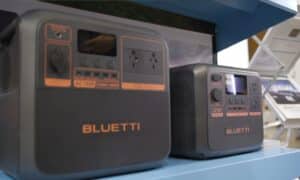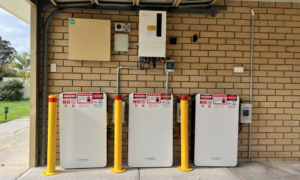FOR IMMEDIATE RELEASE:
CONTACT:
Energy Matters
PH: 133 SUN
FAX: 03 9697 1919
markus.lambert@energymatters.com.au
https://www.energymatters.com.au
Melbourne, Victoria, 21 August 2008. Overseas studies indicate that up to 40% of the world’s electricity needs could be generated by small scale renewable energy sources by 2050. A study by Dr Brenda Boardman of Oxford University’s Environmental Change Institute carried out for Friends of the Earth UK found that in addition to energy efficiency, every home will need renewable technologies installed to generate clean heat or electricity.
Those figures translate to 10 million installations required in Australia at a rate of 240 000 annually for the next 42 years. Even a 60% reduction in carbon dioxide emissions originating from housing in this country by 2050 will require a massive uptake of micro generation renewable technologies.
Quite simply, in order to create such an installation capacity, Australia needs a vital renewable energy industry and a simple strategy to expand the industry is already available; its success demonstrated in many other countries.
Energy Matters together with the renewable energy industry believes that in order for the necessary growth required in Australia, there is a critical need for the Federal Government to introduce a gross feed-in tariff scheme. The gross feed-in tariff is vital to support an expansion of smaller scale and decentralised renewable electricity systems.
A gross feed-in tariff works by guaranteeing a long-term premium payment for all electricity generated from renewable sources, such as grid connect solar power systems, which is fed into the mains electricity supply grid. The Government would fix the level of the tariff to be paid for each renewable technology and set the length of contract.
The German experience
Currently, 50 countries have adopted a feed-in tariff system with considerable success.
In figures released by the German government in March of this year, Germany generated 14.2% of its electricity from renewable sources during 2007 – much of that driven by feed-in tariff legislation.
Additionally, revenue generated by the German renewable industry rose by 10% last year to 24.6 billion euros and employment in the industry increased to nearly a quarter of a million people. The Australian sector currently employs an estimated 3 000 people.
The German government calculates that in 2007, reductions of 57 million tonnes of carbon dioxide emissions were directly attributable to the country’s feed-in tariff legislation.
Nicolas Stern Review supports feed in tariffs
A feed-in tariff has advantages over a rebate system in that it can provide certainty for the industry and some guarantee guarantees for investors. Feed in tariff programs are transparent, easy to administer, promotes diversity of supply and provide a great deal of flexibility. The Nicolas Stern Review arrived at the following conclusion regarding feed-in tariff compared to other support mechanisms, including rebates…(page 366):
“Both sets of instruments have proved effective but existing experience favours price-based support mechanisms. Comparisons between deployment support through tradable quotas and feed-in tariff price support suggest that feed-in mechanisms achieve larger deployment at lower costs.”
A feed-in tariff is a proven cost-effective mechanism for developing renewable electricity capacity, which could be brought in alongside any rebates and would then over time allow rebates to be phased out.
Gross vs. net feed-in tariffs
Energy Matters strongly supports a gross feed-in tariff scheme. Some Australian States, including South Australia, Victoria and Queensland have introduced net feed in tariffs, also known as export metering.
In contrast to a gross feed in tariff which pays for all the renewable energy generated –a net feed in tariff only pays for the energy left after the generator has utilised his/her own needs. This scheme does very little to promote the growth of the solar industry for a number of reasons:
– Export metering is an inequitable system as it discriminates against those who are at home during the day.
– Export metering does not offer investment certainty as the investor cannot be sure on what financial return to expect from their installation.
– Export metering disadvantages owners of smaller PV systems as more of the production of their system is used up in the household meeting ongoing demand
The vast majority of international schemes utilise gross production metering rather than export metering and have demonstrated beyond a doubt that in order for a program to achieve its full potential, a gross feed in tariff is the very best option and a very viable way for Australia to meet its renewable energy target of 20% by 2020











































